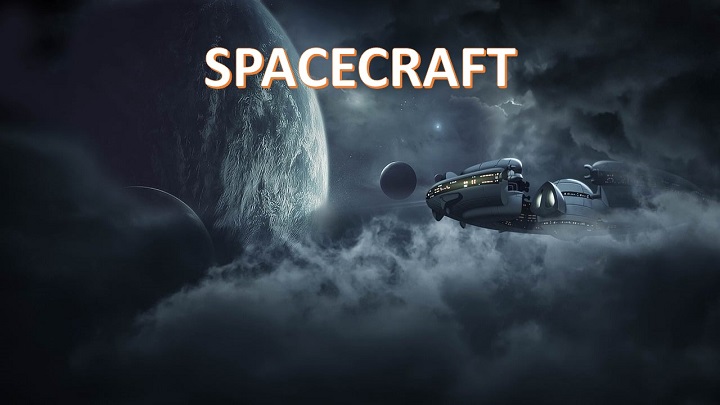Spacecraft have revolutionized our understanding of the universe and helped us to explore the final frontier. In this article, we will take an in-depth look at spacecraft, their history, and how they have evolved over the years to become the advanced machines we know today.
1. Introduction
Spacecraft are vehicles designed to operate in space. They are used for a variety of purposes, including scientific research, communication, and navigation. Over the years, spacecraft have become more advanced, allowing us to explore further into the universe and learn more about the world around us. In this article, we will explore the history of spacecraft, the different types of spacecraft, their components, and the challenges associated with designing them.
2. What is a Spacecraft?
A spacecraft is a vehicle designed to operate in space. It can be manned or unmanned and is used for a variety of purposes, including scientific research, communication, and navigation. Spacecraft can be launched into space using a variety of methods, including rockets and spaceplanes.
3. Brief History of Spacecraft
The history of spacecraft can be traced back to the 1950s when the Soviet Union launched Sputnik 1, the first artificial satellite, into orbit. The United States followed suit in 1958 with the launch of Explorer 1. Since then, numerous countries have launched spacecraft into space, including China, India, and the European Space Agency.
Over the years, spacecraft have become more advanced, allowing us to explore further into the universe. In 1961, Yuri Gagarin became the first human to travel to space aboard the Vostok 1 spacecraft. Since then, numerous manned missions have been launched, including the Apollo missions to the moon and the International Space Station.
4. Types of Spacecraft
There are two main types of spacecraft: manned and unmanned.
i. Manned Spacecraft
Manned spacecraft are vehicles designed to carry humans into space. They are used for a variety of purposes, including scientific research, exploration, and space tourism. Manned spacecraft have been used for numerous missions, including the Apollo missions to the moon and the International Space Station.
ii. Unmanned Spacecraft
Unmanned spacecraft are vehicles designed to operate in space without a crew on board. They are used for a variety of purposes, including scientific research, exploration, and communication. Unmanned spacecraft have been used for numerous missions, including the Hubble Space Telescope and the Voyager spacecraft, which has left our solar system and is now traveling through interstellar space.
5. Components of a Spacecraft
Spacecraft are made up of several components that are essential for their operation.
i. Propulsion System
The propulsion system is used to move the spacecraft through space. There are several types of propulsion systems, including chemical, nuclear, and electric.
ii. Power System
The power system is used to provide energy to the spacecraft. This can be achieved through solar panels, batteries, or nuclear generators.
iii. Guidance System
The guidance system is used to control the spacecraft’s trajectory and orientation. This can be achieved through thrusters or reaction wheels.
iv. Communication System
The communication system is used to transmit data and information between the spacecraft and Earth. This can be achieved through antennas or satellite relays.
v. Thermal Control System
The thermal control system is used to regulate the temperature inside the spacecraft. This can be achieved through radiators or insulation.
6. Launching a Spacecraft
Launching a spacecraft into space is a complex and challenging process. It involves several key components, including launch vehicles and launch sites.
i. Launch Vehicles
Launch vehicles are used to carry the spacecraft into space. There are several types of launch vehicles, including rockets and spaceplanes.
ii. Launch Sites
Launch sites are locations where spacecraft are launched into space. There are several launch sites around the world, including Kennedy Space Center in the United States, Baikonur Cosmodrome in Kazakhstan, and Tanegashima Space Center in Japan.
7. Challenges of Spacecraft Design
Designing a spacecraft that can operate in space presents several unique challenges. These include:
i. Microgravity
Microgravity is the condition of weightlessness experienced in space. This can cause a range of issues for spacecraft, including fluid behavior, bone and muscle loss, and combustion issues.
ii. Radiation
Spacecraft are exposed to high levels of radiation in space, which can damage sensitive equipment and pose a risk to crew members.
iii. Temperature Extremes
Spacecraft are exposed to extreme temperatures in space, ranging from extreme heat when exposed to the sun’s radiation to extreme cold when in the shadow of the Earth.
iv. Space Debris
Space debris, including discarded rocket stages and defunct satellites, pose a significant risk to spacecraft in orbit.
8. Future of Spacecraft
The future of spacecraft is bright, with advancements in technology and new missions on the horizon. Some of the key areas of development include:
i. Advancements in Technology
Advancements in technology, including improved propulsion systems and more efficient solar panels, will allow spacecraft to travel further and explore more of the universe.
ii. Planetary Exploration
Missions to Mars and other planets are currently being planned, which will require the development of advanced spacecraft capable of landing and exploring the surface of these planets.
iii. Space Tourism
Space tourism is becoming an increasingly popular industry, with several companies developing spacecraft capable of carrying paying passengers into space.
9. Conclusion
Spacecraft have played a crucial role in our exploration of the universe, allowing us to learn more about our world and beyond. As we continue to develop new technologies and embark on new missions, the future of spacecraft looks bright.
10. FAQs
1. How long does it take to launch a spacecraft into space?
Ans. The time it takes to launch a spacecraft into space can vary depending on the mission and the launch vehicle being used. Typically, it takes several hours to prepare the spacecraft for launch, followed by several minutes of flight time to reach orbit.
2. What is the difference between a manned and unmanned spacecraft?
Ans. A manned spacecraft is designed to carry humans into space, while an unmanned spacecraft is designed to operate in space without a crew on board.
3. Can spacecraft operate in extreme temperatures?
Ans. Yes, spacecraft are designed to operate in extreme temperatures, including both extreme heat and extreme cold.
4. What is the most common propulsion system used on spacecraft?
Ans. The most common propulsion system used on spacecraft is chemical propulsion, which uses a fuel and an oxidizer to generate thrust.

